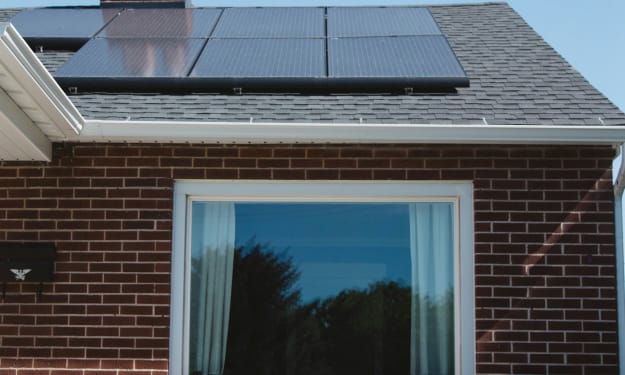Chewed Up and Spat Out
Knocked Down, But Not Out

The storm was approaching. Brian had two days to secure his beloved boat. But where?
Should he secure it to an anchor in the mooring field in the harbor? No, that doesn’t seem like such a great idea. Too much of an open space.
Hmm! Maybe crosstie it in the canal at the back of his house. For those who don’t know, cross tying is a method where you secure two ropes on one side of the canal and two additional ropes on the other side. You crisscross them over the water and then secure the ends to the cleats on your boat. The intention is to have your boat in the dead-middle of the canal, away from the docks and seawall. The problem with that idea is how is that possible when there are twelve houses on our canal (six on each side) and all of them own boats. That turned out to be no option at all. There just wasn’t enough room for all those boats.
Most of us have and use boat lifts. Again, for those who aren’t familiar with them, it’s a mechanical device where you push your boat onto a cradle that is made to look like a large steel box. The first two sections are front and back. On top of those, and raised a bit higher, sit two heavy-duty aluminum braces that run on either side of your boat. This is where your boat will sit, nestled atop and between those long braces. Then using the electric motor, you now lift your boat out of the water where it’s now kept dry and barnacle free.
Brian figured this was his best option. We all did. We saw our husbands work for hours tying their boats to the brackets – front, back and sides, to the pilings, and my husband went a step further by affixing more ropes and flatbed truck-style heavy nylon strapping to the boat cleats and the cleats he installed on the pilings on either side of the lift. He often said that if the boat were blown away, the entire boat lift would have to go with it. Hmm! Let’s hope not.
We noticed Brian tied his boat aft and bow using one long rope. Then crossed another long rope over the mid-section of his boat and affixed them to the service platforms of his lift.
The service platforms are heavy-duty often galvanized pieces of aluminum about one foot wide and the length of the boat and are permanently affixed to the lift. Most boat owners have them because they make maintenance on the boat much easier. All you do is walk from bow to stern as you wash (and sometimes wax) the hull.
My husband approached Brian and volunteered to help him with the tying. He thanked my husband but said what he’d done should be plenty. He assured my husband that he’d be fine.
He wasn’t. Or rather, his boat wasn’t.
On September 22, 2022, the day before Ian hit Southwest Florida, my husband went out back, rechecked the lines on the boat, and then, feeling satisfied, shuttered up the house. Within a few hours, we left to go inland. We were warned about the possibility of an eighteen-foot tidal surge. That would have put our house under water; well, the only part of our house that would be sticking out of the water, would have been about two feet downward from the tip of our roof. We sit at a 10-1/2 foot elevation.
We knew it would be difficult recovering from such a storm, but we’d be alive.
While we are not the kind of people who might panic, we have already lived through hurricane Charley and knew when to stay and when to leave. During Charley, we stayed. Now, we knew better. We left.
Two days after Ian blew through, we returned home. The first thing we did was check our house for damage and assure ourselves that our boat was still where we left it. It was!
The house sustained minimal damage. I won’t say we were lucky. I will, however, say we were blessed. From the minute we evacuated, until the second we drove down our street, I prayed that our house would be okay.
I don’t know how other states regulate their insurance companies but here in Florida, the normal deductible for hurricane damage is two percent of the face value of your home. If your home is valued at $800,000.00, your deductible would, therefore, be about $16,000. Not too many people have that kind of ready cash, – especially after a major storm.
Anyway, our home was safe. Yes, we lost a few soffits, and one screen from the screened enclosure (we call them cages) surrounding our lanai. Others in our area weren’t so lucky. I’ve seen a mess of twisted, mangled metal that had once been a lanai enclosure. There are many cages that no longer have doors and screens. Some houses are now supporting blue tarps because their roofs had considerable damage and now water is leaking into the homes.
We all lost our beautiful landscaping.
Several, including Brian, lost their boats.
I noticed Brian’s boat was no longer on his lift, for that matter, his lift was hanging halfway in the canal. We didn’t need to ask what happened. We knew since we’d gone through the same thing during hurricane Charley in 2004.
Once our city gave the all-clear to travel through the streets, I grabbed my camera to document the damage. Before that, we were on an edict whereby, if you didn’t need to travel our roads, please stay home. There was too much debris along the sides of the roads, roof shingles and tiles littered the streets.
Many trees were blown down. Some were laying in the street, while others had their large branches blocking half of the road.
Yes, it really was unsafe to drive our city (suburban) streets.
As I said, as soon as our city have its approval, I grabbed my camera and took a short ride to the park that abuts the harbor.
I began counting the boats that Ian had wrecked. There were seven that I saw lying in various stages of damage and sinking. Then I espied what I thought might have been Brian’s boat – or rather, what was left of it.
After arriving home about ninety minutes later, I showed my husband my pictures and pointing to one, I asked if that looked like Brian’s boat. He agreed with me.
I walked to Brian’s and asked if he had any word on the whereabouts of his boat. He said no.
Then, I said, “Brian, I sincerely hope I’m wrong but, could this have been your boat?”
I showed him the photo and within seconds, he walked to his couch, sat down, and in a tone of voice that sounded shocked and sad, asked, “where is it?”
After telling him where I took the picture, he got in his car and drove to the park to see for himself. He called thirty minutes later letting me know that, yes, that had been his boat.
Hurricane Ian was not just violent, it was long. It was a slow-moving storm that seemed as though it wanted to linger over our town forever. The damage that had been done to homes, boats, landscaping, and our electricity, is proof of that.
And yet, we are here.
We were not chewed up and spat out like so much of our possessions.
We are here, alive, and well, and yes, we will rebuild.
After Charley and Ian, both Category FOUR hurricanes, eighteen years apart, I’m quite sure that we will survive another one.
We might have been knocked down, but we were certainly not knocked out!
About the Creator
Margaret Brennan
I am a 76 year old grandmother who loves to write, fish, and grab my camera to capture the beautiful scenery I see around me.
My husband and I found our paradise in Punta Gorda Florida where the weather always keeps us guessing.






Comments
There are no comments for this story
Be the first to respond and start the conversation.